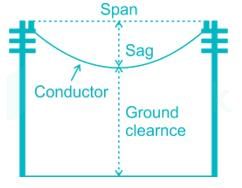Test: Power Systems- 2 - Electrical Engineering (EE) MCQ
20 Questions MCQ Test - Test: Power Systems- 2
In transmission lines, the effective resistance of a conductor is increased by
The main consideration for operating transmission line at high voltage is
| 1 Crore+ students have signed up on EduRev. Have you? Download the App |
Consider the following statements
High voltage is used in long distance power transmission in order to:
1) Reduce the time of transmission
2) Reduce the transmission losses
3) Make the system reliable
Out of these, the correct statements are?
In the analysis of short transmission lines, which of the following is neglected?
Which of the following used to make bus bars and transmission line conductors?
Which of the following is not a type of insulator used in overhead transmission line?
Cables in power transmission line are provided with inter sheaths to:
When feeder ring distributes energy from two or more than two production plants, then this distribution system is known as:
A fault involving all the three phase of a power system is known as
The least expensive protection for over-current in low voltage system is:
Power plant having maximum demand more than installed capacity will have utilization factor:
The average motor load of a consumer is 250 kW at a power factor 0.85 lag. The consumer is charged electricity at the tariff of Rs.50/kVA of maximum demand plus 10 paise per unit consumed. Determine the consumer’s annual bill for a load factor of 70%




















